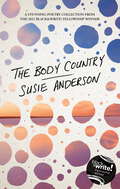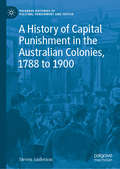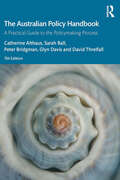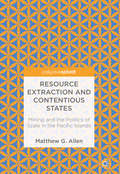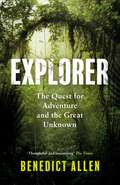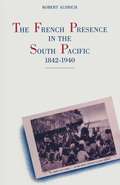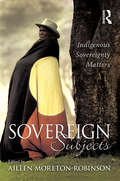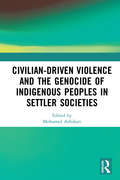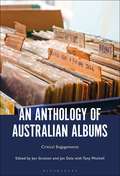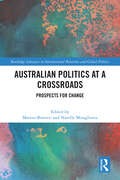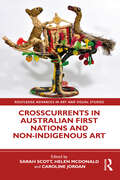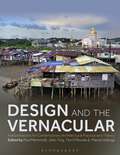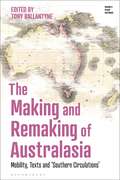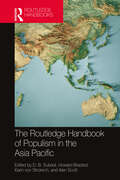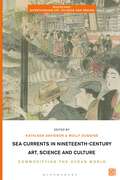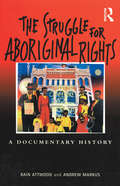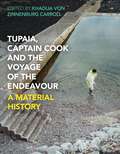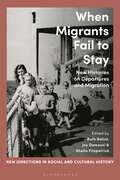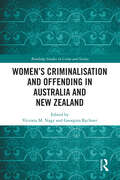- Table View
- List View
the body country
by Susie Anderson'I keep looking at the stars to see the universe, but the joke is I am the universe.' the body country is an evocative exploration of a world that too often marginalises and the power of a land that can offer connection. A meditation of wandering and wondering on Country, inviting the reader to understand the complexities and changing forms of self and love.A Wergaia and Wemba Wemba woman, Susie Anderson captures profound meaning in moments often lost in the busyness of a day, encouraging us all to stop and allow ourselves the space to notice. To notice the shape of a mouth as it says goodbye; the colour of the sky as you fall in love; the way a steering wheel is turned carelessly after many wines; the crunch of dry ground after drought; the smell of fire on the wind; the movement of ants before rain; the power a word, a dress, a piece of art can give to run towards something new. These are poems that take us across rural and urban settings; from the personal to the universal, from looking inward to mapping the land and always bringing us back to the Country that connects us all.'Anderson pays attention to the moments that slip through the cracks and hands them straight to you in a way that can momentarily stun' Harper's Bazaar'The Body Country is an evocative exploration of a world that too often marginalises and the power of a land that can offer connection. Susie captures profound meaning in moments often lost in the busyness of a day, encouraging us all to stop and allow ourselves the space to notice' Wimmera Mail Times
A History of Capital Punishment in the Australian Colonies, 1788 to 1900 (Palgrave Histories of Policing, Punishment and Justice)
by Steven AndersonThis book provides a comprehensive overview of capital punishment in the Australian colonies for the very first time. The author illuminates all aspects of the penalty, from shortcomings in execution technique, to the behaviour of the dying criminal, and the antics of the scaffold crowd. Mercy rates, execution numbers, and capital crimes are explored alongside the transition from public to private executions and the push to abolish the death penalty completely. Notions of culture and communication freely pollinate within a conceptual framework of penal change that explains the many transformations the death penalty underwent. A vast array of sources are assembled into one compelling argument that shows how the ‘lesson’ of the gallows was to be safeguarded, refined, and improved at all costs. This concise and engaging work will be a lasting resource for students, scholars, and general readers who want an in-depth understanding of a long feared punishment.Dr. Steven Anderson is a Visiting Research Fellow in the History Department at The University of Adelaide, Australia. His academic research explores the role of capital punishment in the Australian colonies by situating developments in these jurisdictions within global contexts and conceptual debates.
The Australian Policy Handbook: A Practical Guide to the Policymaking Process
by Catherine Althaus Sarah Ball Peter Bridgman Glyn Davis David ThrelfallThe seventh edition of this classic handbook on the policy process is fully updated, featuring new material on policy making amid local and global disruption, the contestable nature of modern policy advice, commissioning and contracting, public engagement and policy success and failure. The Australian Policy Handbook shows how public policy permeates every aspect of our lives. It is the stuff of government, justifying taxes, driving legislation and shaping our social services. Public policy gives us roads, railways and airports, emergency services, justice, education and health services, defence, industry development and natural resource management. While politicians make the decisions, public servants provide analysis and support for those choices. This updated edition includes new visuals and introduces a series of case studies for the first time. These cases—covering family violence, behavioural economics, justice reinvestment, child protection and more—illustrate the personal and professional challenges of policymaking practice. Drawing on their extensive practical and academic experience, the authors outline the processes used in making public policy. They systematically explain the relationships between political decision makers, public service advisers, community participants and those charged with implementation. The Australian Policy Handbook remains the essential guide for students and practitioners of policy making in Australia.
The Australian Policy Handbook: A Practical Guide to the Policymaking Process
by Catherine Althaus Sarah Ball Peter Bridgman Glyn Davis David ThrelfallThe seventh edition of this classic handbook on the policy process is fully updated, featuring new material on policy making amid local and global disruption, the contestable nature of modern policy advice, commissioning and contracting, public engagement and policy success and failure. The Australian Policy Handbook shows how public policy permeates every aspect of our lives. It is the stuff of government, justifying taxes, driving legislation and shaping our social services. Public policy gives us roads, railways and airports, emergency services, justice, education and health services, defence, industry development and natural resource management. While politicians make the decisions, public servants provide analysis and support for those choices. This updated edition includes new visuals and introduces a series of case studies for the first time. These cases—covering family violence, behavioural economics, justice reinvestment, child protection and more—illustrate the personal and professional challenges of policymaking practice. Drawing on their extensive practical and academic experience, the authors outline the processes used in making public policy. They systematically explain the relationships between political decision makers, public service advisers, community participants and those charged with implementation. The Australian Policy Handbook remains the essential guide for students and practitioners of policy making in Australia.
Resource Extraction and Contentious States: Mining And The Politics Of Scale In The Pacific Islands
by Matthew G. AllenMining And The Politics Of Scale In The Pacific Islands
Explorer: The Quest for Adventure and the Great Unknown
by Benedict AllenWhat does it mean to be an explorer in the twenty-first century? Explorer is the story of what first led Benedict Allen to head for the farthest reaches of our planet – at a time when there were still valleys and ranges known only to the remote communities who inhabited them. It is also the story of why, thirty years later, he is still exploring. It’s the story of a journey back to a clouded mountain in New Guinea to find a man called Korsai who had once been a friend, and to fulfil a promise made as young men. It is also a story of what it is to be ‘lost’ and ‘found’. Honest, sensitive and packed with insight, in Explorer Allen considers the lessons he has learnt from his numerous expeditions – most importantly, from the communities he has encountered and that he has spent so much of his life immersed in. ‘To me personally, exploration isn't about planting flags, conquering Nature, or going somewhere in order to make a mark – it's about the opposite. It's about opening yourself up, allowing yourself to be vulnerable, and letting the place and people make their mark on you.’
The French Presence in the South Pacific, 1842–1940
by Robert AldrichAn examination of France's presence in the South Pacific after the takeover of Tahiti. It places the South Pacific in the context of overall French expansion and current theories of colonialism and imperialism and evaluates the French impact on Oceania.
Sovereign Subjects: Indigenous sovereignty matters
by Aileen Moreton-Robinson; Rachel Fensham; Jon StrattonIndigenous rights in Australia are at a crossroads. Over the past decade, neo-liberal governments have reasserted their claim to land in Australia, and refuse to either negotiate with the Indigenous owners or to make amends for the damage done by dispossession. Many Indigenous communities are in a parlous state, under threat both physically and culturally.In Sovereign Subjects some of Indigenous Australia's emerging and well-known critical thinkers examine the implications for Indigenous people of continuing to live in a state founded on invasion. They show how for Indigenous people, self-determination, welfare dependency, representation, cultural maintenance, history writing, reconciliation, land ownership and justice are all inextricably linked to the original act of dispossession by white settlers and the ongoing loss of sovereignty.At a time when the old left political agenda has run its course, and the new right is looking increasingly morally bankrupt, Sovereign Subjects sets a new rights agenda for Indigenous politics and Indigenous studies.
Civilian-Driven Violence and the Genocide of Indigenous Peoples in Settler Societies
by Mohamed AdhikariExisting studies of settler colonial genocides explicitly consider the roles of metropolitan and colonial states, and their military forces in the perpetration of exterminatory violence in settler colonial situations, yet rarely pay specific attention to the dynamics around civilian-driven mass violence against indigenous peoples. In many cases, however, civilians were major, if not the main, perpetrators of such violence. The focus of this book is thus on the role of civilians as perpetrators of exterminatory violence and on those elements within settler colonial situations that promoted mass violence on their part.
Civilian-Driven Violence and the Genocide of Indigenous Peoples in Settler Societies
by Mohamed AdhikariExisting studies of settler colonial genocides explicitly consider the roles of metropolitan and colonial states, and their military forces in the perpetration of exterminatory violence in settler colonial situations, yet rarely pay specific attention to the dynamics around civilian-driven mass violence against indigenous peoples. In many cases, however, civilians were major, if not the main, perpetrators of such violence. The focus of this book is thus on the role of civilians as perpetrators of exterminatory violence and on those elements within settler colonial situations that promoted mass violence on their part.
Wife
by Samuel Adamson- And your husband forgave you. But what did you do? Decided that forgiveness was offensive and walked out on your marriage. With nothing. Into nothing.- Into everything, I think.It's 1959. Robert leaves Ibsen's A Doll's House outraged by its attack on the sanctity of marriage; his wife Daisy dashes round to the stage door, in love with both Nora and the actress who plays her, thrilled by their promise of escape.Daisy is at the crossroads. Her moral compass tells her to go one way, society the other. What she chooses to do next will have consequences not just for her and Robert, but for four couples who come after them over ninety years.The truth is we have to give up parts of ourselves if we want to be with someone. And what if, before you know this, you run away from the wrong person?Samuel Adamson's Wife premiered at the Kiln Theatre, London, in May 2019.
An Anthology of Australian Albums: Critical Engagements
An Anthology of Australian Albums offers an overview of Australian popular music through the lens of significant, yet sometimes overlooked, Australian albums. Chapters explore the unique qualities of each album within a broader history of Australian popular music. Artists covered range from the older and non-mainstream yet influential, such as the Missing Links, Wendy Saddington and the Coloured Balls, to those who have achieved very recent success (Courtney Barnett, Dami Im and Flume) and whose work contributes to international pop music (Sia), to the more exploratory or experimental (Curse ov Dialect and A.B. Original). Collectively the albums and artists covered contribute to a view of Australian popular music through the non-canonical, emphasizing albums by women, non-white artists and Indigenous artists, and expanding the focus to include genres outside of rock including hip hop, black metal and country.
Australian Politics at a Crossroads: Prospects for Change (ISSN)
As the 21st century proceeds apace, Australia faces new and old challenges, both domestically and internationally. These include managing complex governance issues, preventing democratic fracture, balancing an ever- shifting geopolitical strategic order, addressing the recognition and identity demands of marginalised groups, and responding to crises and urgent policy challenges, such as climate change.Bonotti, Miragliotta, and the other contributors to this volume analyse and evaluate the challenges which confront Australia by locating them in their national and comparative context. The various contributions reveal that while these challenges are neither novel nor unique to Australia, the way in which they manifest and Australia’s responses to them are shaped by the country’s distinctive history, culture, geography, location, and size.The chapters offer a cutting- edge analysis of these pressing challenges faced by Australia and offer reflections on how to address them. The book is a valuable resource for scholars and students of Australian politics, and of comparative politics in a global perspective.
Crosscurrents in Australian First Nations and Non-Indigenous Art (Routledge Advances in Art and Visual Studies)
This edited collection examines art resulting from cross-cultural interactions between Australian First Nations and non-Indigenous people, from the British invasion to today. Focusing on themes of collaboration and dialogue, the book includes two conversations between First Nations and non-Indigenous authors and an historian’s self-reflexive account of mediating between traditional owners and an international art auction house to repatriate art. There are studies of ‘reverse appropriation‘ by early nineteenth-century Aboriginal carvers of tourist artefacts and the production of enigmatic toa. Cross-cultural dialogue is traced from the post-war period to ‘Aboriginalism’ in design and the First Nations fashion industry of today. Transculturation, conceptualism, and collaboration are contextualised in the 1980s, a pivotal decade for the growth of collaborative First Nations exhibitions. Within the current circumstances of political protest in photographic portraiture and against the mining of sacred Aboriginal land, Crosscurrents in Australian First Nations and Non-Indigenous Art testifies to the need for Australian institutions to collaborate with First Nations people more often and better. This book will appeal to students and scholars of art history, Indigenous anthropology, and museum and heritage studies.
Design and the Vernacular: Interpretations for Contemporary Architectural Practice and Theory
Design and the Vernacular explores the intersection between vernacular architecture, local cultures, and modernity and globalization, focussing on the vast and diverse global region of Australasia and Oceania. The relevance and role of vernacular architecture in contemporary urban planning and architectural design are examined in the context of rapid political, economic, technological, social and environmental changes, including globalization, exchanges of people, finance, material culture, and digital technologies. Sixteen chapters by architects designers and theorists, including Indigenous writers, explore key questions about the agency of vernacular architecture in shaping contemporary building and design practice. These questions include: How have Indigenous and First Nations building traditions shaped modern building practices? What can the study of vernacular architecture contribute to debates about sustainable development? And how has vernacular architecture been used to argue for postcolonial modernisation and nation-building and what has been the effect on heritage and conservation? Such questions provide valuable case studies and lessons for architecture in other global regions -- and challenge assumptions about vernacular architecture being anachronistic and static, instead demonstrating how it can shape contemporary architecture, nation building and cultural identities.
The Making and Remaking of Australasia: Mobility, Texts and ‘Southern Circulations’ (Empire’s Other Histories)
This book explores the emergence of 'Australasia' as a way of thinking about the culture and geography of this region. Although it is frequently understood to apply only to Australia and New Zealand, the concept has a longer and more complicated history. 'Australasia' emerged in the mid-18th century in both French and British writing as European empires extended their reach into Asia and the Pacific, and initially held strong links to the Asian continent. The book shows that interpretations and understandings of 'Australasia' shifted away from Asia in light of British imperial interests in the 19th century, and the concept was adapted by varying political agendas and cultural visions in order to reach into the Pacific or towards Antarctica. The Making and Remaking of Australasia offers a number of rich case studies which highlight how the idea itself was adapted and moulded by people and texts both in the southern hemisphere and the imperial metropole where a range of competing actors articulated divergent visions of this part of the British Empire. An important contribution to the cultural history of the British Empire, Australia, New Zealand and Pacific Studies, this collection shows how 'Australasia' has had multiple, often contrasting, meanings.
The Routledge Handbook of Populism in the Asia Pacific (Indo-Pacific in Context)
This handbook brings national and thematic case studies together to examine a variety of populist politics from local and comparative perspectives in the Asia Pacific. The chapters consider key and cross cutting themes such as populism and nationalism, religion, ethnicity and gender, as well as authoritarianism. They show how populist politics alters the way governments mediate state-society relations. The essays in this volume consider: • diverse approaches in populist politics, for example, post-colonial, strategic vs ideational, growth and redistribution, leadership styles, and in what ways they are similar to, or different from, populist discourses in Europe and the United States; • under what social, political, economic and structural conditions populist politics has emerged in the Asia-Pacific region; • national case studies drawn from South, East and Southeast Asia as well as the Pacific analyzing themes such as media, religion, gender, medical populism, corruption and cronyism, and inclusive vs exclusive forms of populist politics; • modes and techniques of social and political mobilization that populist politicians employ to influence people and their impact on the way democracy is conceived and practiced in the Asia Pacific. As a systematic account of populist ideologies, strategies, leaders and trends in the Asia Pacific, this handbook is essential reading for scholars of area studies, especially in the Asia Pacific, politics and international relations, and political and social theory.
Sea Currents in Nineteenth-Century Art, Science and Culture: Commodifying the Ocean World (Biotechne: Interthinking Art, Science and Design)
How did scientists, artists, designers, manufacturers and amateur enthusiasts experience and value the sea and its products? Examining the commoditization of the ocean world during the nineteenth century, this book demonstrates how the transaction of oceanic objects inspired a multifaceted material discourse stemming from scientific exploration, colonial expansion, industrialization, and the rise of middle-class leisure. From the seashore to the seabed, marine organisms and environments, made tangible through processing and representational technologies, captivated practitioners and audiences. Combining essays and case studies by scholars, curators, and scientists, Sea Currents investigates the collecting and display, illustration and ornamentation, and trade and consumption of marine flora and fauna, analysing their material, aesthetic and commercial dimensions. Traversing global art history, the history of science, empire studies, anthropology, ecocriticism and material culture, this book surveys the currency of marine matter embedded in the economies and ecologies of a modernizing ocean world.
The Struggle for Aboriginal Rights: A documentary history
The Struggle for Aboriginal Rights is the first book of its kind. Not only does it tell the history of the political struggle for Aboriginal rights in all parts of Australia; it does so almost entirely through a selection of historical documents created by the Aboriginal campaigners themselves, many of which have never been published. It presents Aboriginal perspectives of their dispossession and their long and continuing fight to overcome this. In charting the story of Aboriginal political activity from its beginnings on Flinders Island in the 1830s to the fight over native title today, this book aims to help Australians better understand both the continuities and the changes in Aboriginal politics over the last 150 years: in the leadership of the Aboriginal political struggle, the objectives of these campaigners for rights for Aborigines, their aspirations, the sources of their programmes for change, their methods of protest, and the outcomes of their protest. Through the words of Aboriginal activists, across 150 years, The Struggle for Aboriginal Rights charts the relationship between political involvement and Aboriginal identity.
Tupaia, Captain Cook and the Voyage of the Endeavour: A Material History
Centring priest and navigator Tupaia and Pacific worldviews, this richly illustrated volume weaves a new set of cultural histories in the Pacific, between local islanders and the crew of the Endeavour on James Cook's first 'voyage of discovery' (1768-1771). Contributors consider material collections brought back from the voyage, paying particular attention to Tupaia's drawings, maps, cloth and clothes, and the attending narratives that framed Britain's engagement with Pacific peoples. Bringing together indigenous and Pacific-based artists, scholars, historians, theorists and tailors, this book presents a cross-cultural conversation around the concepts of acquired and curated artefacts that traversed oceans and entwined cultures. Each chapter draws attention to a particular material, object or process to reveal fresh insights on the voyage, the societies it brought together and the histories it transformed. Authors also explore animal iconography, instruments and ethnomusicology, and performances and rituals. This work challenges colonial museum collections and celebrations of Cook's voyages, using materials old and new to make connections between past and present, whilst reinforcing Tupaia's agency as both a historical figure and a contemporary muse. Tracing overlapping folds of symbolism, this book draws together a picture of the diverse materials and people at the centre of cultural exchange.
When Migrants Fail to Stay: New Histories on Departures and Migration (New Directions in Social and Cultural History)
The aftermath of the Second World War marked a radical new moment in the history of migration. For the millions of refugees stranded in Europe, China and Africa, it offered the possibility of mobility to the 'new world' of the West; for countries like Australia that accepted them, it marked the beginning of a radical reimagining of its identity as an immigrant nation. For the next few decades, Australia was transformed by waves of migrants and refugees. However, two of the five million who came between 1947 and 1985 later left. When Migrants Fail to Stay examines why this happened. This innovative collection of essays explores a distinctive form of departure, and its importance in shaping and defining the reordering of societies after World War II. Esteemed historians Ruth Balint, Joy Damousi, and Sheila Fitzpatrick lead a cast of emerging and established scholars to probe this overlooked phenomenon. In doing so, this book enhances our understanding of the migration and its history.
Women’s Criminalisation and Offending in Australia and New Zealand (Routledge Studies in Crime and Society)
Women’s Criminalisation and Offending in Australia and New Zealand offers new research and analysis of women’s offending and criminalisation in Australia and New Zealand from British settlement through to the late twentieth/early twenty-first centuries. Drawing attention to women as offenders as understood in a multitude of ways, this collection highlights how women have been involved with crime and criminal behaviour, their treatment inside and outside of courts and prisons, and how women’s deviation from societal norms have attracted negative attention throughout the decades. For Aboriginal and Māori women especially, the responses were harsher than what they could be for non-indigenous women. The chapters cover a broad range of transgressions that women have been actively involved with, including theft, drug and alcohol abuse and offences, organised crime, and homicide, as well as how women’s behaviour and their bodies have been criminalised and responded to by authorities. What this collection demonstrates is that women have often chosen to be involved with crime and criminality, while on other occasions their behaviour, innocent as it was, was not considered acceptable by contemporaries, resulting in confusion and misapprehension of women who refused to fit a mould. Women’s Criminalisation and Offending in Australia and New Zealand brings together historical and criminological methods, theories, and scholars to shed light on how Australia and New Zealand’s colonial, later state, and national governments have sought to understand, control, and punish women. This collection will be of interest and value to scholars, students, and everyone with an interest in criminology, history, law, sociology, Indigenous studies, and Australian and New Zealand studies.
